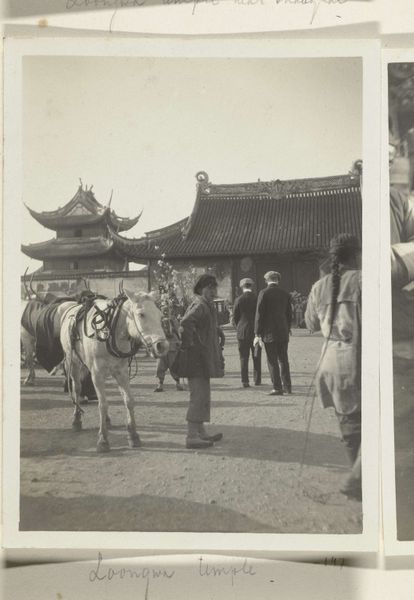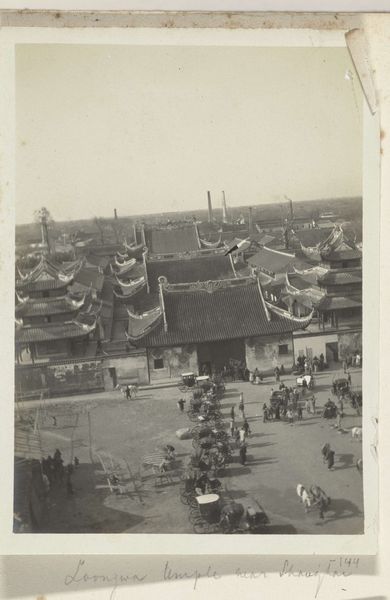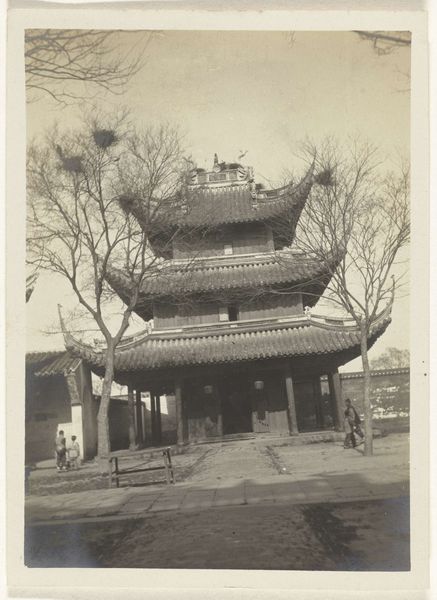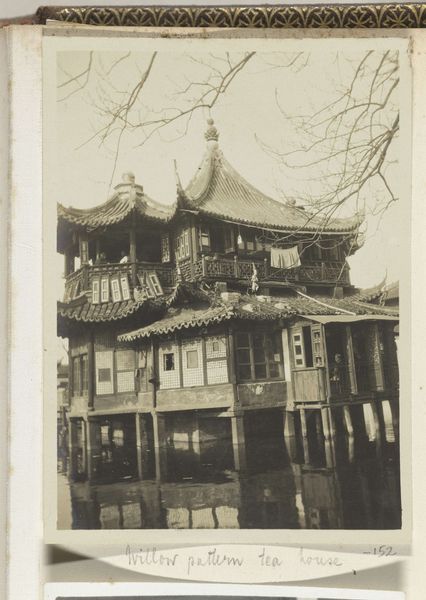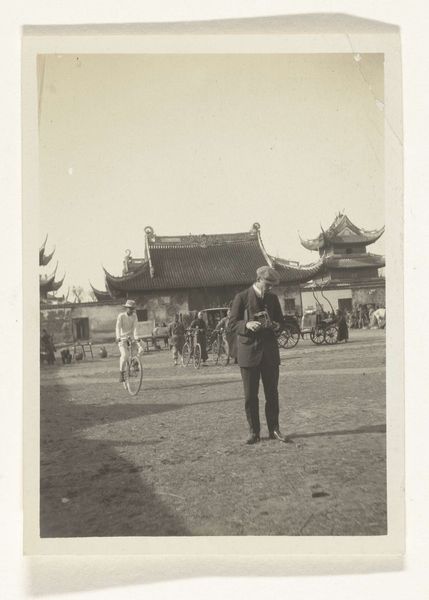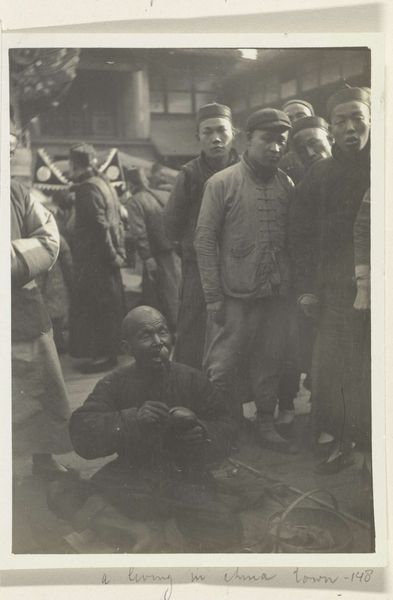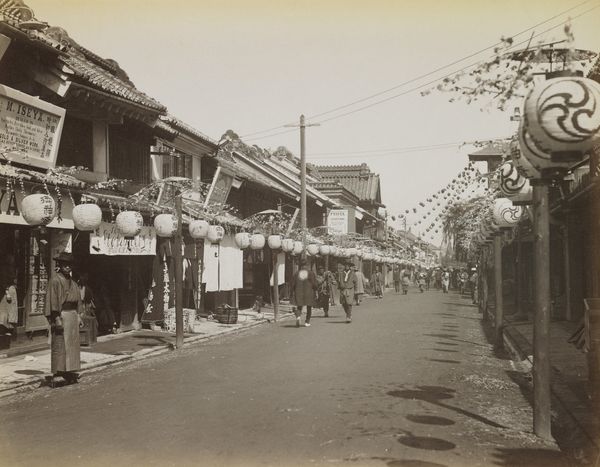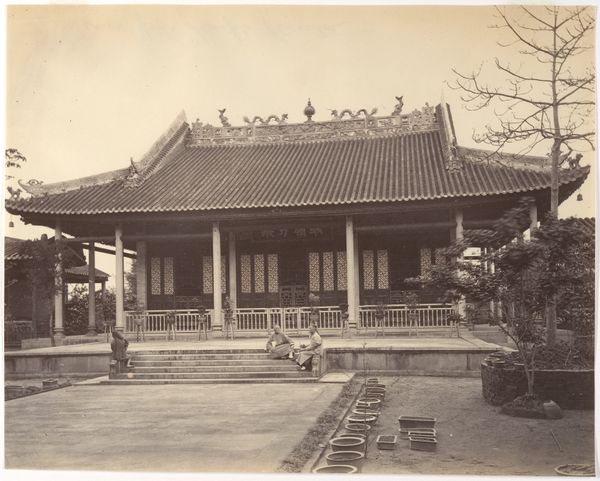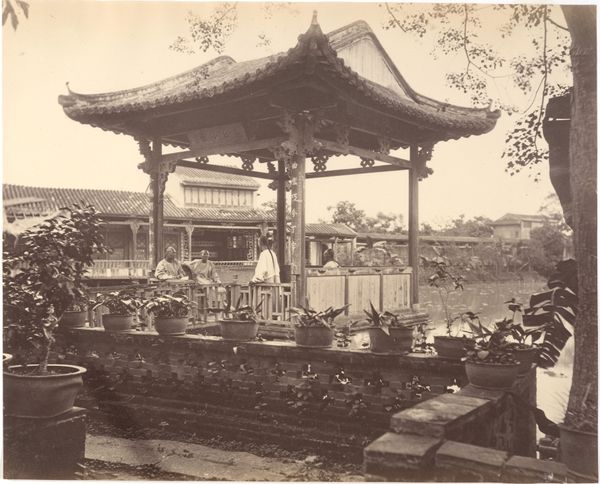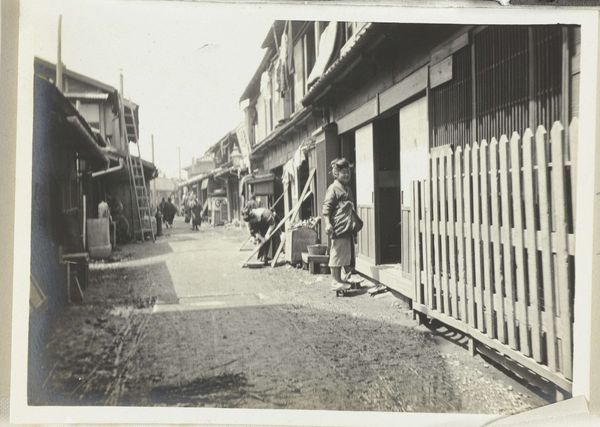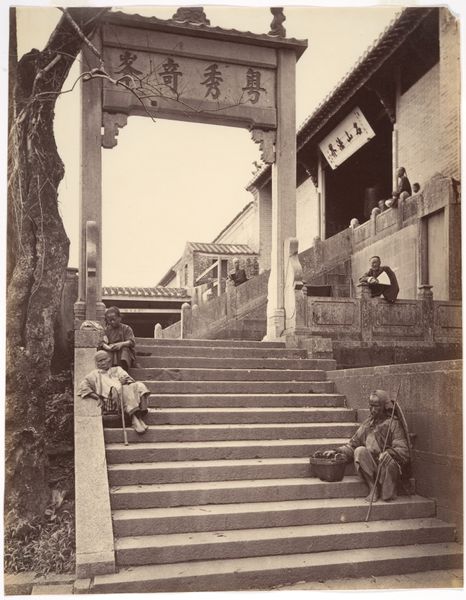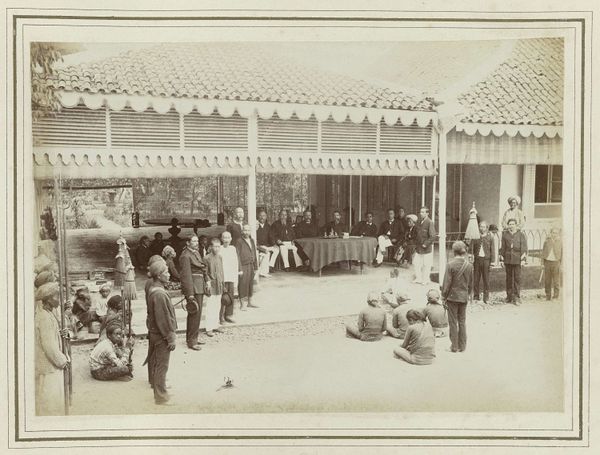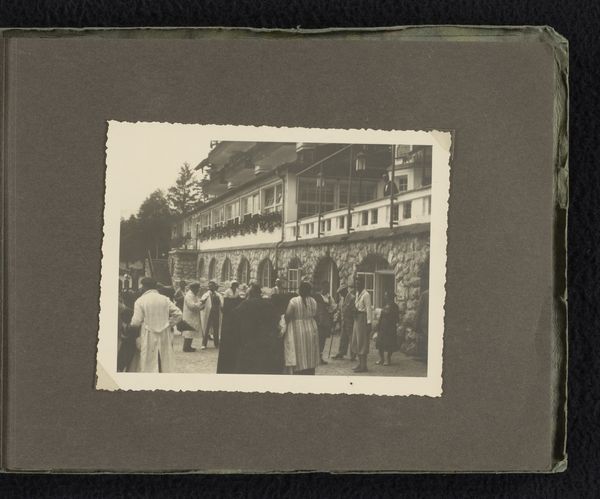
print, photography, gelatin-silver-print
#
print photography
# print
#
asian-art
#
landscape
#
archive photography
#
street-photography
#
photography
#
historical photography
#
orientalism
#
gelatin-silver-print
Dimensions: height 100 mm, width 74 mm, height 363 mm, width 268 mm
Copyright: Rijks Museum: Open Domain
Curator: What a compelling scene. This gelatin silver print, titled "Market square in China town," is credited to Geldolph Adriaan Kessler, and dates from before 1908. It resides here at the Rijksmuseum. It's interesting how the materiality of early photography impacts the reception, isn’t it? Editor: Indeed. My immediate impression is the contrast – a staged stillness amidst an active scene. The monochrome flattens depth, rendering it somewhat theatrical. There’s a palpable tension between what's captured and what remains unseen, a quality I'd attribute to both the constraints and deliberate framing of photography in that era. Curator: Absolutely, the constraints imposed by the medium likely informed the photograph's content. The slow shutter speeds demanded stillness, influencing the arrangement of bodies within the frame and therefore the historical record, because people needed to be relatively still for the long exposure. Furthermore, Kessler’s choice of gelatin silver print contributes to the historical narrative; this technology, relatively new at the time, democratized image-making and impacted consumption. Editor: I agree that the gelatin silver process allowed greater accessibility to photography. Thinking about how the museum collects and displays these images now – a Western museum presenting scenes of China from over a century ago raises important questions. Is this documentation or does it border on exoticism and the problematic aestheticizing of 'the other', reflective of early twentieth-century power dynamics? How does showing "China town" perpetuate the museum's position as an arbiter of cultural heritage? Curator: Precisely! The photograph is not just an isolated piece, but is intrinsically bound up with the social and institutional framework that produced, circulated and consumed it. It is easy to be blind to how power dynamics and politics shape imagery. Also consider, the surface qualities – the paper's texture, the specific chemical processing – become imbued with significance. For the image to be here and exist, it was purchased, traded, documented, cataloged, stored. A chain of custody that dictates the image's present location and value. Editor: The work itself raises many questions about context and reception over time. The interplay between aesthetic value and historical weight here is something worth contemplating. Curator: Yes, both materially and conceptually, it speaks volumes about that era, its production means, and continues to resonate with audiences today, sparking dialogues about the past and our present.
Comments
No comments
Be the first to comment and join the conversation on the ultimate creative platform.
